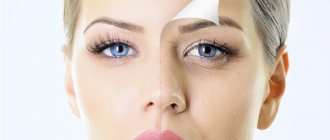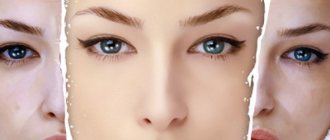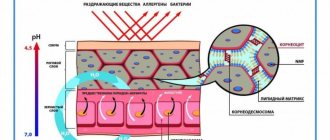Skin restoration after a burn depends not only on the severity, but also on how urgent and competent actions were taken in the first minutes after the incident. Thus, incorrect actions immediately after a burn can either increase the area and depth of the injury, or even lead to the death of the victim.
Due to the fact that the depth and area of damage, and, consequently, the speed and quality of recovery very much depends on the severity of the burn, we will next consider the process of skin regeneration with this in mind.
Skin restoration for first degree burns
The first degree of burn severity is the mildest. This includes all sunburns, some thermal burns (boiling water, iron, frying pan, etc.), when either the temperature was not very high or the duration of exposure was short. In this case, only the superficial layer of human skin suffers and it turns red.
Skin restoration at this level occurs within 3-4 days due to the renewal of skin cells. For additional help to the skin, you can use various creams and ointments that promote skin regeneration - Panthenol, Rescuer, Levomekol, Liniment Aloe, Solcoseryl and others, as well as take vitamin complexes containing vitamins A, B, C, P.
Skin restoration for second degree burns
The second degree of burn is characterized by more serious damage to the skin, when the dermis is also damaged in the upper layer. In addition, the top layer may come off, forming blisters, and clear liquid accumulates underneath it. Skin restoration in this case, with a favorable course, occurs within 3 weeks, and if the blisters break open and infection occurs, then the duration of treatment can last up to a month or more
In this case, recovery can be divided into several phases:
- the top layer of skin moves away from the dermis to form a blister, and fluid accumulates underneath it;
- the fluid in the bladder resolves, the upper skin of the bladder becomes rough and torn, new skin forms below;
- healing of the burn site occurs.
To help the skin recover, the same creams and ointments are used as for the first degree of severity - Panthenol, Rescuer, Levomekol, Liniment Aloe, Solcoseryl and others, as well as vitamins A, B, C, P, which promote skin regeneration. In addition, the doctor can prescribe drugs for skin regeneration in tablets, for example, Derinat.
However, if you suddenly accidentally open a blister (either yourself or accidentally catch it on something), then to avoid the development of bacteria in this place, you need to lubricate the wound with antibiotic ointment. In both cases, after applying the ointment to the skin, you must bandage your hand with a clean bandage.
Prognosis for burns: will there be scars?
The prognosis of treatment depends on the severity of the damage: if superficial burns of the 1st degree usually do not lead to the formation of scars, then in the 2nd degree the condition should be carefully monitored. Such tissue damage disappears within 2 weeks, sometimes leaving scars, but these disappear over time. If you are dealing with a grade 3 injury, recovery will take several months (sometimes a year), and surgery may be required to restore the skin.
The following problems are also likely to occur:
- As with any tissue damage, there is a risk of infection. With improper care, sepsis may develop, which can have serious consequences.
- The lack of fluid resulting from a burn leads to a decrease in blood volume in the body.
- Since the skin allows you to regulate body temperature, a burn on the face with a large area of damage leads to a disruption in heat exchange.
- 2nd and 3rd degree burns can cause scarring, affecting quality of life and leading to emotional problems.
If you encounter tissue damage on your face, consult a specialist and follow the recommendations to avoid scar formation.
Skin restoration for third degree burns
The third degree of burn is characterized by either a large (up to 20% of the skin) area of damage, or a fairly deep damage to the skin. In this case, the burn affects the epidermis, dermis and even subcutaneous fat. Skin restoration in such cases can last 3 or more months and consists of the following phases:
- cell death;
- rejection of old skin;
- restoration of new cells.
Treatment of such burns occurs mainly in a hospital under the supervision of doctors. During treatment, ointments with antibiotics are used to prevent inflammation in the wound, ointments and creams to accelerate skin regeneration, allowing to speed up the process of its restoration - Panthenol, Spasatel, Levomekol, Liniment Aloe, Solcoseryl and others, vitamin complexes, antibiotics in tablets, if necessary, painkillers .
Getting rid of scars after burns
Due to deep damage to the skin in burns of the third and fourth degrees of severity, normal skin in these places is replaced by connective (scar) tissue, which leads to an unsightly appearance of the burn site. And if the scar is in a visible place (face, head or hands), it causes inconvenience to the victim. Skin restoration in such cases is not solved in any one specific way due to the wide variety of types of scars, which is due to:
- various types of scars, which can be keloid, atrophic, hypertrophic and normotrophic;
- different height and depth compared to the level of healthy skin;
- in various colors different from the usual skin color;
- shape, area, lifespan;
- place of appearance and influence on the functions of nearby organs (not closing the mouth, eversion of the eyelid, etc.).
Despite the naturalness of the recovery process, outside help is necessary, otherwise even the most harmless, at first glance, burn can turn into a big problem. In addition, the result of a prolonged burn is scars, which in large quantities and on open areas of the body not only do not paint, they disfigure the human body. Therefore, damage to the epidermis from the very beginning must be taken under strict control, trying to do everything so that the recovery is not just quick, but as correct and comprehensive as possible, eliminating unpleasant consequences.
Types of scars after a burn
If the injury was serious or the wound became infected during the healing process, the likelihood of scarring increases. Based on the totality of their characteristics, they can be divided into the following types:
- Keloid Scars usually occupy a larger area than the damage itself. They are dense growths, protruding strongly above the rest of the skin and often differing in color (it varies from pink to red and dark brown). Itching and sometimes pain also occur at the site of injury. Such scars are formed as a result of excess collagen, when the body seems to be in a hurry to “plug the gap,” that is, to heal the damage received. Getting rid of them can be difficult, but silicone patches and sheets are effective. When there is no result, the scars are removed using cryotherapy.
Cryotherapy session for facial scars - Hypertrophic ones are similar to keloids, but protrude by a maximum of 4 mm. In this case, redness of the scar tissue, itching, and the formation of compactions are characteristic. This type is more treatable, so the prognosis is usually favorable.
- Tightness often occurs after thermal effects on the skin. As a result, it moves to the site of injury, which limits facial expressions. Their treatment turns out to be problematic, and it is often necessary to resort to radical methods.
- Atrophic ones are located in a small depression, and it can be difficult to eliminate such a cosmetic defect.
normotrophic forms at the site of injury . It does not protrude above the surface of the skin and does not differ in color, and in the future it may disappear completely.
What is the danger?
Often, blisters form at the burn site with a clear liquid inside, called plasma, oozing through the damaged skin. If you do not treat the affected area, the inflammatory process will intensify and suppuration will begin. With an irresponsible attitude, infection is not far off, which is accompanied by high fever, weakness and chills. As a consequence of such an unfavorable development of events, at best, this is the formation of scars that spoil the skin, and at worst, blood poisoning.
Thus, even a small burn can lead to big trouble; troubles will follow each other in a string, and everything can end in serious complications, including amputation of limbs or a more irreparable consequence - death. With proper care, all this can be avoided - soon after the burn, new skin will grow under the blister, and after a couple of weeks the damaged epidermis will dry out and begin to separate. After removing dead cells, traces of a light pink color will remain on the surface of the body. Young skin is extremely sensitive and delicate; it requires special, delicate care, but if handled correctly, soon there will be no trace of the burn.
Degrees of burns and restoration of the dermis after them: creams and ointments
Burns belong to the category of injuries that occur under the influence of an external factor. Destruction of the integrity of the dermis can occur as a result of contact with chemicals and fumes, electric current, exposure to radioactive radiation, or as a result of thermal effects on areas of the skin. They are classified depending on the severity of the destruction of the skin by degrees, according to which the desired type of treatment and medications are prescribed.
- Thermal burns occur when careless handling of open fire, steam, hot objects and liquids, which destroy the skin upon close contact.
- Electrical burns are caused by exposure to electrical current or electrical discharge, including lightning.
- A chemical burn can be caused by synthetic substances with increased toxicity or other aggressive effects that are used in production and at home.
- Radioactive burns occur due to exposure to ultraviolet radiation on exposed skin as a result of contact with devices or objects emitting background radiation.
The most popular medicinal substances for restoring areas of the dermis affected by burns are complex preparations made in the format of gels, ointments and creams. Depending on the degree and type of injury, they are divided into antiseptics, analgesics, anti-inflammatory and wound healing.
1st degree
Skin erythema with 1st degree burns without serious destruction of the stratum corneum, recovers on its own in 3-4 days, provided there is no destruction of the dermis and a small scale of injury. In case of serious scale of the burn and deterioration of the person’s condition due to dehydration and thermoregulation, treatment is prescribed in which the majority of the healing substances are ointments prepared on the basis of aloe, vitamin supplements and preparations made in gel format. For the treatment of 1st degree burn injury, the following is used:
Some of the drugs have side effects in the form of itching and allergic reactions, since the medicinal substance that is present in it eliminates not only pain syndromes, but also localizes inflammatory processes, promotes rapid healing of wounds and regeneration of damaged areas.
2nd degree
With 2nd degree burns, the damage to the dermis is more significant than in the first case: in addition to swelling and hyperemia, there is detachment in the form of blisters filled with liquid on the upper layers. With unopened vesicles, repair of the dermal cell occurs in 2-3 weeks; if the integrity of the blisters is damaged, the healing time increases depending on the characteristics of the disease. If an infection develops in the wound, skin cell regeneration may take up to a month to complete the treatment period.
To speed up the healing process of 2nd degree burns, the following medications are prescribed in the form of creams and ointments:
- Actovegin 5% (ointment).
- Thymogen (cream).
- Solcoseryl (gel).
- Reparef (antimicrobial ointment).
- Wundehil (ointment).
- Traumeel S (ointment).
- Metaluracil (ointment).
In addition to the listed drugs, in order to stimulate the restoration of the dermis, Derinat (sodium deoxyribonucleate solution) and regenerants in the form of tablets (Xymedon) are prescribed.
Preparations for effective skin regeneration for burns of various degrees
You can buy medications to care for a burn wound at a pharmacy. But depending on the degree of skin damage and the stage of healing, the remedies may differ.
At first degree
A first-degree burn is a superficial injury to the skin that causes redness and, very rarely, small blisters with clear contents. Scars do not remain after healing.
With proper first aid, the injury will heal on its own within a few days. To do this, the damaged skin must be washed in cold water, treated with an alcohol-free antiseptic, and applied with a healing cream that does not contain oils.
What anti-inflammatory drugs can be used for a first degree burn:
- Panthenol-911 – cream;
- Algipor - sponge for dressing;
- Lioxazine – wipes and gel;
- Dermazin - cream.
To prevent infection, Levomekol, an ointment with antibacterial properties, can be applied to the wound.
There are healing products with natural ingredients: Propolis ointment, Calendula ointment. But allergy sufferers should not use such drugs.
The product is applied in a thin layer to previously cleaned burn areas. Before the procedure, hands should also be washed with soap and treated with an antiseptic.
The most convenient form of the drug is a spray: it eliminates contact with the injured area, which reduces the likelihood of infection.
In the second degree
A second degree burn is considered superficial, like the previous one. But with this form, the damage is a little deeper, so the reaction to high temperatures or chemicals is the formation of blisters. During the healing process, they burst and the burned area becomes covered with a crust. After it falls off, the skin underneath will be very sensitive. Healing time takes 2-3 weeks.
Therapy after first aid requires treatment with antiseptics (Miramistin, weak solution of potassium permanganate). Blisters can be lubricated with hydrogen peroxide to help them dry faster.
The following healing ointments are effective at this stage of treatment:
- Panthenol;
- Bepanten;
- Sulfargin;
- Solcoseryl;
- Radevit.
With a second degree burn, the patient experiences pain. First, discomfort is relieved by washing the wound in cool water: low temperatures temporarily “freeze” the sensations. But after this, the pain may return again, and therefore it is necessary to use ointments that have analgesic properties: Oflomelid, Oflocain. Biodespol and Activtex wipes work well.
To relieve pain, you can take an analgesic tablet or a non-steroidal anti-inflammatory drug (Analgin, Paracetamol, Ibuprofen). But the ointment is much more effective, because, in addition to pain relief, it promotes rapid healing of the skin, relieving swelling and inflammation.
With a second-degree burn, there is a risk of wound suppuration, so it is useful to apply drugs to it that draw out pus:
- Vishnevsky ointment;
- Rescuer.
After the pus comes out, it is useful to smear the damage with Zinc ointment.
When a crust forms at the burn site, the bandage can be removed to allow the wound to dry faster. A thin crust does not need to be smeared with anything, a thick crust does not need to be softened with any anti-burn ointment so that it does not peel off the wound prematurely or crack.
Before using any ointment, you need to carefully study the composition to see if it contains any components that could cause an allergic reaction.
For third and fourth degrees
A 3rd or 4th degree burn is a serious injury that requires hospitalization. It affects a large area of the body (more than 1 palm), damaging not only the skin, but also muscles and bones. The skin is charred. With 4th degree, the area of the burn does not matter: damage to soft tissue provokes intoxication with decay products and can lead to the loss of a limb. The pain may cause the patient to go into shock.
Severe burns can include injuries of 1st and 2nd degree severity, for example, along the edge of the wound.
All stages of therapy for severe forms of burns are controlled by the attending physician. Skin plastic surgery may be required, antibiotics and narcotic analgesics are used (under breathing control), and fluid and protein are administered through a drip.
Self-medication for third and fourth degree burns is unacceptable.
Methods of recovery after a 4th degree burn
Grade 4 skin lesions from burns require immediate hospitalization of the victim in special medical institutions, where the patient will remain for the entire duration of treatment. The course of treatment for such wounds is divided in stages:
- Surgical removal of scab from a wound as a consequence of a burn.
- Replenishment of defective areas by transplantation or other means.
- Elimination of post-burn scars using plastic surgery.
- Rehabilitation.
During the treatment process, after a certain period of time (10-15 days), in areas damaged by the burn, the dead areas of the dermis are rejected independently or surgically removed, after which the edges and other areas of the wound begin to heal. The appearance of scars in 4th degree burns means that the patient is recovering.
Surgical
The consequences that 3rd and 4th degree burns leave behind require surgical intervention, which may differ in the method of treatment. The following surgical interventions are used to treat 4th degree burns:
- A skin graft that is taken from the patient.
- Transplantation of dermal keratinocytes in cases where there are deep lesions.
- Growing dermal cells.
- Use of collagen matrices for the purpose of transplantation of keratinocytes and fibroblasts.
Scar removal procedures
To eliminate the consequences of burns, which manifest themselves in the form of scars, the following treatment methods are used:
- Grinding using a laser beam.
- Therapy using ultrasound equipment.
- Treatment of fruit acids using peeling.
- The use of various types of balms and creams with a restorative effect.
Methods for skin regeneration after burns
Many people are interested in the question of which doctor to contact for burns; the answer is simple - to a surgeon, but only for a small degree of skin damage. There are special burn centers where a specialized doctor, a combustiologist, sees you. He is the one who will be able to help people with severe and extensive body damage in the form of burns.
The process of skin restoration depends on the degree of damage, depth, and whether the epidermal layer of germ cells is affected. To speed up the regeneration process, local medications, surgical and physiotherapeutic procedures are used. These medicinal ointments include:
- Povidone-Iodine;
- Bepanten;
- Streptocide;
- Fastin;
- Mederma;
- Neosporin;
- Dexpanthenol.
The active substance of the last resort (provitamin B5) is part of the Panthenol spray. There are also special bandages made of silicone. They are used to relieve pain and itching associated with tissue healing. An example of such dressings is Mepiform. The bandage must be applied to dry skin
Surgical interventions include:
- Skin grafting.
- Growing cells.
- Keratinocyte transplantation.
- Use of collagen matrices for transplantation of fibroblasts and keratinocytes.
To eliminate the consequences of burns, namely scars, use:
- balms and creams with a restorative effect;
- laser beam grinding;
- peeling with fruit acids;
- ultrasound therapy.
The purpose of physiotherapeutic procedures is to restore normal blood flow, increase the speed of healing, and prevent the process of decay if tissue necrosis has occurred in the area. The following physiotherapeutic methods exist:
- electrotherapy;
- magnetic therapy;
- phonophoresis or ultrasound therapy;
- UHF therapy (ultraviolet irradiation);
- darsonvalization;
- photochromotherapy;
- aeroionotherapy;
- laser therapy.
First degree
Skin restoration after a 1st degree burn occurs quite quickly, within 3-4 days. This degree of damage is considered mild, characterized by redness of the skin and does not harm the stratum corneum. Improvement occurs due to the frequency of cell renewal. But, if such a burn occurs on a large scale, then the water balance and temperature regulation in the body are disrupted. This situation requires treatment. The recovery process is long. Vitamin complexes containing:
- A;
- WITH;
- IN;
- R.
There are such means for restoring the skin after a first-degree burn:
- Silvederm;
- Ointments with Kalanchoe;
- Solcoseryl;
- Balms with comfrey;
- Levomekal;
- Aloe liniment;
- Rescuer;
- Panthenol.
Restoration of facial skin is also possible with the use of some of the listed products. Thus, Solcoseryl in cosmetology is an effective facial product. It also helps get rid of 1-2 degree burns. The components of the gel are extracted from calf blood serum. The medication starts the process of collagen production and promotes the growth of the dermis.
Second degree
With 2nd degree burns, swelling and blisters occur with fluid filled inside. If you do not open them, the cells begin to recover within 3 weeks. The duration of the regeneration process increases if the bubbles are damaged. There is a danger of the addition of an infectious agent. If infection occurs, then the therapeutic course is increased to 30 days.
Second-degree burns are treated with special ointments and gels, but in addition, the doctor can also prescribe a sodium deoxyribonucleate solution. In pharmacies this remedy is better known as Derinat. It stimulates the process of cell regeneration. You may need to take Xymedon tablets. The listed and similar products are called “regenerants,” i.e., they accelerate the rate of skin restoration. It is necessary to take 0.5 g of Xymedon 3 times a day
Restoration of the skin using physiotherapeutic methods
It is advisable to prescribe procedures for recovery after burns at the earliest stages of treatment. The rehabilitation period includes the restoration of blood supply, rapid regeneration with the elimination and prevention of decay in areas where there was necrosis of the dermis. To accelerate the therapeutic effect, the following methods of rehabilitation after burns are used:
- Magnetotherapy. Helps restore affected areas, activates blood supply, stabilizes the general condition of the patient.
- Ultraviolet irradiation. Accelerates skin repair, inhibits inflammation, strengthens the immune system.
- Aeroionotherapy. By treating the affected areas with ionization, it increases the permeability of the skin.
- Photochrome therapy, laser therapy. Both types of treatment help to restore skin areas faster due to irradiation, which enhances the effect.
- Dorsonval. A preventive method for preventing ulcers.
- Phonopharesis, ultrasound, UHF. Helps resolve scars, improves blood circulation, resists inflammation and decay.
- Electrotherapy. Several types of treatment are used (transcranial electroanalgesia, electropheresis), which enhance antibacterial properties, restore blood supply, and promote regeneration of cellular tissues.
ethnoscience
In folk medicine, there are a number of recipes for substances that help restore skin cells, increase blood circulation, have whitening properties, relieve inflammation and treat decay.
- Potato. Finely grated raw potatoes are used as compresses for minor burns, to relieve pain and treat the dermis (redness, swelling).
- Parsley. The plant (leaves) must be chopped as finely as possible and the substance applied to the burn-affected skin for 20-30 minutes.
- Cucumber. The juice is extracted from the plant and used to make compresses.
- Nourishing and moisturizing masks. Beeswax (1 part) and butter (2 parts), melted in a water bath, mixed together until smooth and, adding a little lemon juice, used as a mask.
- Sea buckthorn oil. The substance is applied to the affected areas several times a day to reduce spots on the skin that appear as a result of burns.
- Aloe. An excellent antiseptic, analgesic, and anti-inflammatory agent. Both the pulp and juice of the plant are used.
Cream for skin restoration after burns is a product for the treatment of superficial damage to the skin, subcutaneous fat layer or deeper tissues as a result of radiation, thermal, electrical or chemical exposure. Burns are diseases and have important medical and social significance for victims.
What is considered normal
There are a number of phenomena that can appear in a sore spot. It’s worth preparing in advance, finding out their nature, and not panicking when they occur.
- Blisters, abrasions . This is how the skin reacts to external influences. Over time, a stronger and thicker cover forms. Wear loose clothing made from natural fabrics, protect the burn from sunlight, and do not try to remove blisters.
- Pustules . Small pustules form on the healing areas. This is a consequence of clogged pores. This usually goes away quickly. If you experience deep, painful pimples, see your doctor. A specialist will tell you how to restore your skin after a burn.
- Scars . With superficial burns, the skin recovers quickly and without consequences. If deeper layers are damaged, scar tissue can form. In the most difficult cases, skin grafting is required.
- Pigmentation disorder . The healed area is noticeably lighter. Within a year, the skin restores its normal color.
Skin treatment after a burn can be carried out at home if the damage is shallow and affects a small area. Many products are available for free sale. However, consulting a specialist will not be superfluous.
What are the dangers of burns to the skin?
To effectively treat burn injuries, the severity of the injury must be clearly identified. The classification is based on the nature of the damage to the integumentary tissues received.
| Degree | Characteristic | Recovery |
| First | In the first minutes, a strong burning sensation, swelling, and redness appears. | The wound heals in a few days. There are rarely any traces left. |
| Second | Within a few hours, a bubble with liquid inside will form. | The injury heals without leaving any traces. |
| Third | Tissue necrosis and scab formation. | With grade A, healing does not leave scars. Grade B leaves behind a visible scar. |
| Fourth | Carbonization of tissues, necrosis of the deep layer. | Treatment is long-term and requires surgical intervention. |
The damaging factors are:
- chemical - acid, alkali (in domestic conditions and causes vinegar, iodine);
- thermal – high temperature (hot metal surface, boiling water, glue, steam, ultraviolet rays);
- radiation – release of radiation;
- electric – electric shock from faulty household appliances, lightning strike.
Skin restoration products
It is better to restore skin after burns using pharmaceutical products. There are several main types of drugs:
- Ointment. They have a wound-healing, antibactericidal, analgesic effect. Under their influence, the regeneration of the epithelium is accelerated.
- Aerosols and sprays. Used in the treatment of deep skin lesions. There is no need to come into contact with the wound when applying.
- Cream. To prevent the growth of keloid scars.
- Bandage. The fabric base is impregnated with painkillers. First aid for relieving severe pain at home.
- Gel. Promotes rapid cleansing of the surface of the injury from necrotic dead masses, serves as a prevention of suppuration and scar tissue.
- Foam. A product for quickly restoring skin after a burn. Used at the initial stage of recovery.
- Patch. Has a quick cooling effect, relieves pain, accelerates the regeneration process.
- Solution. It is used as a last resort when there are no other drugs.
- Medical glue. Forms a film on the surface with a strong antimicrobial effect.
A burned person rarely thinks about the aesthetic consequences of the injury. In the first hours, an ambulance is required to relieve pain and eliminate severe consequences. If the regeneration of damaged skin after a burn has led to scarring, relief smoothing products come to the rescue. Cosmetics with medicinal properties or cosmetic procedures will help remove the scar.
We recommend reading:
SURGICAL METHODS FOR RESTORING FACIAL SKIN AFTER A BURN
Currently, the most common procedure is plastic surgery with a skin flap taken from the patient himself or the implantation of artificial skin for transplantation after burns.
For large areas of damage, balloon stretching is practiced. The technique involves introducing a bulk silicone graft through a small incision under the skin next to the damaged area. The balloon is filled with saline solution to increase the volume of the skin by gradually stretching it. At the final stage, the graft is removed and the affected area is covered with the grown fragment.
The latest developments in the field of cell biology are widely used in Belgian clinics. One of the most promising methods for restoring skin after burns is transplanting epidermal keratinocytes to the victim.
.
An equally effective method of treatment is growing a transplant from dermal cells on a collagen carrier.
with subsequent replacement of extensive defects.
A collagen matrix can be placed on the wound, onto which the victim’s own cellular material – keratinocytes and fibroblasts – is transplanted. A fibrin matrix is also used, which is characterized by better contact with damaged tissues.
Review of effective creams
Medicines in the form of creams will help quickly restore the skin after a 1-2 degree burn.
Main topical preparations:
- Povidoy-Yod. Thanks to active iodine, it kills bacteria and has a softening effect. It is not recommended for the treatment of burns in children and those with high sensitivity to the active component.
- Levomekol. The composition includes chloramphenicol and methyluracil, which prevent the development of infection. Helps the skin quickly recover, heal, and prevents scarring.
- Panthenol. Effective against all types of burns. Helps soften the injured area, restore elasticity, and activate regenerative processes.
- Rescuer. The cream composition eliminates redness, swelling, and inflammation. Used to treat when the skin is peeling.
- Bepanten. The drug is prescribed for first aid and for the subsequent recovery period.
The indicated products intended for skin regeneration after burns are only a small part of the total number of all methods that help restore damaged tissue.
How to treat
Skin regeneration after burns goes through several stages. Each requires its own means: cream, ointment, spray, gel, bandages. Thermal damage is treated with ointments. For example, "Levomekol". It has bactericidal, analgesic, and wound-healing properties. The active components of Povidone-iodine ointment disinfect and accelerate the recovery process after 1st and 2nd degree burns. The popular balm “Rescuer” acts in a similar way and promotes active regeneration.
Creams are usually used in the second stage, to prevent the occurrence of scars. For thermal and sunburn, Panthenol foam is recommended. Unlike ointments and creams, it has a light texture, is well absorbed and penetrates into the deep layers of the skin. This is especially important in case of serious injuries, when any touch to the wound causes severe pain.
Gels are considered a good treatment: “Apollo”, “No Burns”. They contain an antiseptic, which will be useful in the initial treatment of injury. The drugs have analgesic and healing properties. They help clean the wound from necrotic tissue, prevent inflammation and suppuration. As a result, the appearance of scars is prevented.
Anti-burn dressings are used to treat skin after a burn. They are impregnated with a special composition that relieves pain and has an antiseptic effect.
In case of extensive lesions, compression garments are recommended. It is put on the problem area and worn for a certain time. underwear creates slight pressure on the forming scars and promotes their resorption. Only a doctor can determine whether this method is worth using. In addition, you need to do certain exercises, eat right and lead an active lifestyle.
How can you soften your skin?
The method of treatment largely depends on the type of burn injury. To provide effective first aid, it is necessary to clarify how the injury was received.
Oil
Boiling oil can cause varying degrees of damage.
In the second and third degrees, treatment is indicated exclusively in a medical institution, where the doctor will develop an optimal recovery plan.
The home therapy option is only suitable for the first degree. Olazol or Panthenol are used to relieve pain. Healing can take several weeks; thin skin must be softened with Bepanten, Panthenol, Vitaon, La-Cri, etc. A folk recipe showed good results: a compress with juice from aloe leaves.
In the sun
Tanning beds and the sun are dangerous to the skin and can cause serious damage. Sunburn can be treated with special medications that are distributed by any pharmacy.
Panthenol will help effectively relieve pain, prevent inflammation and soften. When exposed to it, cells begin to regenerate faster. After application, a protective healing film is formed, which helps restore health. After treatment, the skin does not peel off, crack, or develop pigmentation.
To relieve fever and pain, Aspirin, Ibuprofen and other drugs are suitable.
Electrical appliances
In case of electric shock, a set of measures is required. An important condition is to bring the patient out of a serious condition.
If an arm, leg or other part is damaged, the patient is given dressings with antiseptics and, if necessary, decompression necrotomy. Patients are treated as for thermal burns - Panthenol, Bepanten and other ointments that help restore lost functions to the dermis. For severe burns, Fusiderm and Fuzimet ointments help speed up the recovery process.
How to quickly restore skin with creams
Getting burned is dangerous and harmful; if this happens, try to take all necessary measures to speed up regeneration.
- Relieving inflammation and swelling. Wash the wound with hydrogen peroxide or chlorhexidine. Applying the anti-inflammatory drug Panthenol, Rescuer or Pavignon-Iodine and dressings.
- Removing dead masses. After drying, peeling is done at home or in the salon.
- Moisturizing and nutrition. Special products are used for post-burn therapy.
- Protection from sunlight, low and high temperatures, otherwise you can get burned again and get a scar.
A burn can greatly change your life. It is important to provide first aid in a timely manner and take a responsible approach to the rehabilitation period. Among the therapeutic agents, there must be drugs that help soften the skin after a burn and prevent scarring. The right approach will help preserve beauty, and not remember it from old photos.










